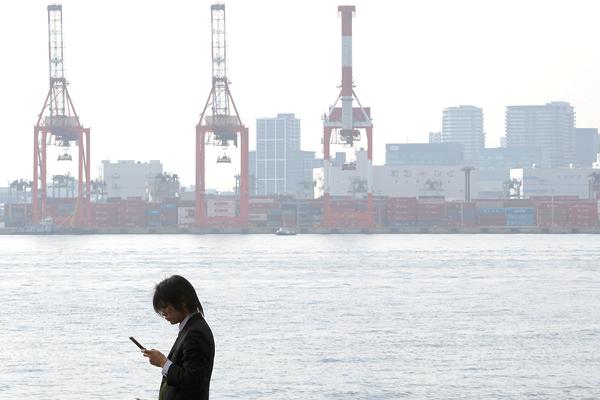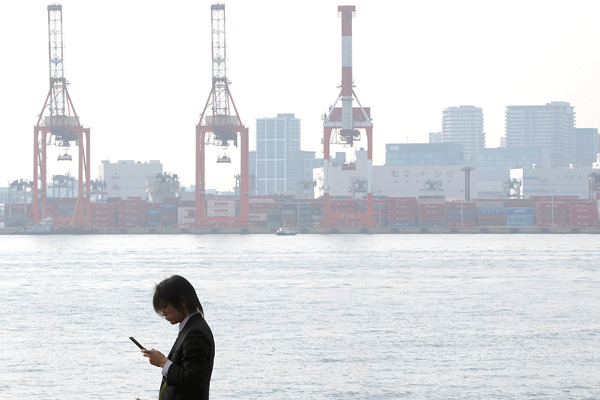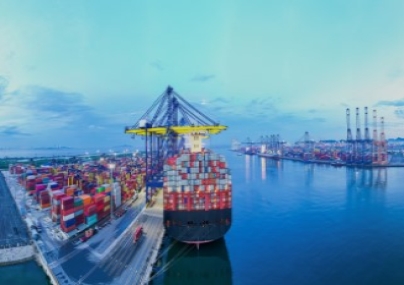
Skip to
This is certainly not a period of smooth sailing for the shipping industry. In September alone, two bulk carriers applied for bankruptcy protection for creditors: Global Maritime Investments Cyprus filed for Chapter 11 protection in the U.S. first, followed by Japanese bulk carrier Daiichi Chuo Kisen Kaisha. Analysts are predicting more failures if the market for dry freight continues to slump. The market is currently near six-year lows, and rates for large ships carrying iron ore and coal are barely covering operating costs this year.
In late October, A.P. Møller-Maersk cut its 2015 profit forecast by 15 percent, blaming a slowdown in the container shipping market that suggests a weakening global economy. The Danish conglomerate operates Maersk Line, the world’s largest container shipping company which transports roughly 20 percent of all goods on the busiest routes between Asia and Europe, making it a key bellwether of global trade. Analysts say Maersk’s problems also stem from overcapacity in the shipping industry, which appears to be worse than previously anticipated and is driving down freight rates.
Andrew Rigden Green, a Hong Kong based shipping disputes partner with Stephenson Harwood, says that the shipping industry has certainly seen better days. “It’s not the most profitable market, as the bulk sector is suffering quite significantly because of low commodity prices. People are therefore not willing to pay high freight rates. There are a number of pressures, on ship owners in particular, to continue to pay back loans that they’ve borrowed and to be able to finance their ships, and yet freight rates remain low. There hasn’t been the expected rise in consumer rates across the more developed markets that would spur an upturn in container shipping, either.”
That said, it’s not all gloom for the industry. “Fortunes are quite mixed,” adds Rigden Green. “One of the things, for example, that has been positive in the last few years has been the capacity of medium-sized container ships. They haven’t suffered in the same way as the guys who went into the mega container ships, and they’ve been able to keep a more balanced book in terms of profit and loss.”
However, even medium-sized container ships have their challenges. “They are feeling more competition from the outside providers,” says Rigden Green. “The non-Asian based shipping lines are coming into the market and putting a little bit more pressure there on the freight rates.” Finally, he notes that in the bulk sector, all the players are suffering from the slowdown of imports of commodities by China. “There’s not been the same demand, but in some cases it’s the new normal, and people are beginning to adjust to that,” he says.
Back to topLAWYERS BUSY
With the global commodities meltdown set to continue, the shipping industry can expect to see more bankruptcies. “If such a market is sustained, we can expect a few more companies to be in line,” said Jayendu Krishna, director at Drewry Maritime Advisors, in a Reuters report. However, despite the filings, some market experts say a rebound in dry bulk could be swift. “I agree dry bulk looks gloomy, but we feel we’re much closer to the end of this part of a downcycle than we are to the beginning,” said Martin Rowe, managing director of Clarksons Platou Asia, according to a Reuters report.
Regardless of the state of the market, lawyers still have a reasonable amount of work to keep them occupied. Both the shipping disputes and shipping finance practices at Stephenson Harwood’s Hong Kong office have remained hectic, according to Rigden Green. “A mixed practice including maritime insolvency has been keeping us busy,” he says. “This includes protecting ship owners from becoming insolvent by assisting them to restructure, as well as working through insolvency situations.”
Additionally, the fact that the firm’s shipping practice is closely related to its trade practice has helped. “One of the challenges for lawyers is that claims managers and insurers have become more sophisticated, and they are beginning to manage the claims inhouse,” says Rigden Green. “And sometimes the perceived cost of legal services is high, so people don’t want to give out instructions to private practice lawyers. We’ve been able to meld with other practices within our firm so we can provide legal services to the trade practices as well as the shipping practice. The key has been to be adaptable in that and not be focused on what people would’ve called ‘bread-and-butter’ or ‘run-of-the-mill’ shipping work.
He notes that the firm’s shipping finance partners are also extremely busy. “This surprises them because the general outlook of the market seems so negative, and yet they are seeing more new lendings coming online, and it’s not restructuring; this is new business. So where there are insolvencies, or hiving down, or restructurings in one sector, we are seeing that creating opportunities for either new players, or players who are expanding their business in other sectors. There has been some consolidation or hunkering down for a little while, but people are beginning to expand their fleets again,” says Rigden Green.
And he expects this to continue. “A few years ago, shipping wasn’t necessarily one of the leading practices in our Hong Kong office,” he says. “Now it is one of the integral parts of our business, both in the disputes sector and the ship finance sector. There were only three of us a year ago, and now I am managing nine associates. Similarly, on the finance side the number has gone up from four to nine. As a firm, these are the bright spots for the future.”
Shipping getting anti-competitive for smallest states, UN says
By Tom Miles
Shipping mergers are leaving an increasing number of countries serviced by too few suppliers to ensure a competitive market, the U.N. trade and economic think tank UNCTAD said on Wednesday.
Globally, there is now an average of 15.7 companies offering regular container shipping services to each country, a number that has declined steadily from 22.1 in 2004, said UNCTAD in its annual Review of Maritime Transport.
“I don’t see any reason why this trend would not continue,” says Jan Hoffmann, head of trade facilitation at UNCTAD and coordinator of the report.
The three biggest firms – Maersk Line, Mediterranean Shipping Company, and CMA CGM – have 35 percent of the world market, the report said. At the start of this year, the top 20 firms controlled 83 percent of container shipping capacity globally, and all their new orders were for bigger vessels.
“The average vessel size per country will continue to grow and so we expect there will be fewer companies in individual markets, and this is an increasing challenge for the smallest players,” Hoffmann says.
When a country has fewer than four suppliers, it risks getting squeezed because there is less pressure on shippers to compete by cutting costs, he adds.
There were now 32 such countries, up from 22 in 2004. Most are small island states such as Kiribati, Micronesia and Samoa. But the list also includes Iceland, Qatar, Iraq, Latvia, Eritrea, Montenegro and Cambodia.
“It’s getting more challenging for the smallest players. For the big ones – China, Europe – whether you still have 20 countries competing or 15, it doesn’t matter, you still have a choice. But when it goes down from three to two, or from two to one, then you have a critical situation.”
There was no “government of the seas” with powers to protect small states against such monopolies, and it was a tricky problem to solve, he says.
But small island states – many of which are seen to be at risk from global warming and rising sea levels – could push for tighter environmental standards, which would force many older ships to be scrapped and help to curb the cost pressure that was contributing to the shrinking number of shipping firms.
“It would be good for the shipping industry and for the environment if we had more stringent environmental regulations that would encourage ship scrapping,” he says.
Back to top


